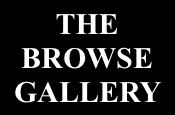
Robert Wolfgang Schnell was born in 1916 into a banker family in Wuppertal in what was then the German Empire. Growing up during an era of revolutionary struggles and cultural upheavals in the Weimar Republic, he already became politicised at an early stage in life. During World War II, he deserted from the Reichswehr section of the German army in Holland. In 1947, Schnell was engaged by the Deutsche Theater in Berlin. He remained in Berlin until his death in 1986.
As a young man, Robert Wolfgang Schnell penned his first compositions and began to write poetry, which was subsequently followed by stories, novels and children's books. Over a 20-year period, he would publish more than 20 books. He produced oil paintings and watercolours, and created woodcuts and graphic works. Furthermore, he staged theatre plays, wrote screenplays and worked as an actor in theatre, film and television. As one of the most prominent initiators of the first independent artistic movement in Berlin during the post-war era (Eberhard Roters, former director of the Berlinische Galerie), Schnell has a sustained influence on the (sub) cultural scene in West Berlin and Kreuzberg from the 1950s to the '70s.
Robert Wolfgang Schnell was born in 1916 into a banker family in Wuppertal in what was then the German Empire. Growing up during an era of revolutionary struggles and cultural upheavals in the Weimar Republic, he already became politicised at an early stage in life. During World War II, he deserted from the Reichswehr section of the German army in Holland. In 1947, Schnell was engaged by the Deutsche Theater in Berlin. He remained in Berlin until his death in 1986.
As a young man, Robert Wolfgang Schnell penned his first compositions and began to write poetry, which was subsequently followed by stories, novels and children's books. Over a 20-year period, he would publish more than 20 books. He produced oil paintings and watercolours, and created woodcuts and graphic works. Furthermore, he staged theatre plays, wrote screenplays and worked as an actor in theatre, film and television. As one of the most prominent initiators of the first independent artistic movement in Berlin during the post-war era (Eberhard Roters, former director of the Berlinische Galerie), Schnell has a sustained influence on the (sub) cultural scene in West Berlin and Kreuzberg from the 1950s to the '70s.
His own artistic work was initially shaped over the first few years by his connections with painters and writers from Rhenish Expressionism, such as Else Lasker-Schüler or Kurt Nantke among others, who were painters in the so-called Wupper Circle. He would go on to find kindred spirits in Berlin in Günter Bruno Fuchs and the sculptor Günter Anlauf, with whom he founded the zinke gallery in Kreuzberg in 1959.
Despite his astounding productivity as a painter and writer, with more than 1,000 pictures and dozens of literary publications, Schnell was mostly unable to live from the income generated by his painting and literary works. This was also true for his most successful publications: His most widely discussed collection of stories Mief und Muzes Flöte, the novels Erziehung durch Dienstmädchen and Geisterbahn, as well as the higher-circulated children's books Pulle und Pummi and Holger wohnt im Zoo. By the time of his death, most of his books were already out of print.
As was the case with his oil paintings and drawings, the works that R. W. Schnell penned as a writer also did not fit into a specific style or genre. Which placed him in the company of many artists and literary figures among the zinke adherents. 15 years after World War II, Berlin was in the middle of the Cold War, which was also being fought with cultural weapons. During the late 1950s and early '60s, Schnell and the artists he befriended assumed an anti-establishment position, which challenged the formalised requirements of "socialist realism" with its Stalinist character, just as much as it did the new, abstract artistic tastes. For that, he was treated with disregard by the established art business and discredited as being "unmodern". In reaction to this, the creative heads in the zinke propagated their independence and a multifaceted form of art, "the experience of which led you into the fantastical, realistic, ironic and dreamlike, into a world of peace being lived, far removed from external polemics." (Schnell)
Until the Berlin Wall was built, the zinke gallery was a pulsating meeting-place for painters, sculptors and writers from West and East Berlin, and far beyond as well. Many members of the subsequent Berliner Malerpoeten (Berlin Painter-Poets) established their first working relations and friendships during this era: Günter Grass, Günter Bruno Fuchs, Artur Märchen, Friedrich Schröder-Sonnenstern, Kurt Mühlenhaupt and Robert Wolfgang Schnell; with Aldona Gustas being the first one to issue an invitation to the group of Berlin Painter-Poets in 1972.
2016 Geisterbahn - 100 Jahre Robert Wolfgang Schnell (1916 - 1986), Browse Gallery, Berlin
Berliner Malerpoeten. Pulsierendes Leben – Pulsierender Tod, Rathaus Wiesbaden
2014 Berliner Malerpoeten. Pulsierendes Leben – Pulsierender Tod, Browse Gallery, Berlin
AWARDS
1971 Verleihung des Eduard-Von-der-Heydt-Preis, Stadt Wuppertal
1981 Deutscher Literaturfonds e. V., Arbeitsstipendium
1984 Ruhrpreis für Kunst und Wissenschaft, Stadt Mühlheim

 Deutsch
Deutsch  English
English